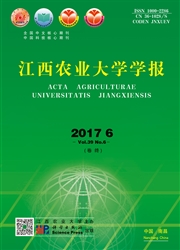

 中文摘要:
中文摘要:
为比较刀鲚(Coilia nasus)的人工养殖群体与野生群体的遗传结构差异,为刀鲚的种质资源保护和养殖业的可持续发展提供科学依据,应用线粒体DNA细胞色素b基因的序列分析法研究了灌江纳苗养殖刀鲚子三代(F3)、洄游刀鲚(长江野生群体)和湖鲚3个淡水生活环境下的群体遗传多样性。结果显示:刀鲚线粒体DNA细胞色素b基因大小为1 141 bp;在3个群体22尾个体中,找到12种不同的单倍型,单倍型多态性(h)为0.922,多态位点(S)为18,其中单一多态位点9个,简约信息位点9个,核苷酸多样性(π)为0.004 1,平均核苷酸差异数(K)为4.714,平均遗传距离为0.004 2。洄游刀鲚和养殖刀鲚群体的核苷酸多样性、遗传距离都比湖鲚高,说明养殖刀鲚比湖鲚的遗传多样性要丰富,仍保持着较高的遗传多样性。
 英文摘要:
英文摘要:
To provide a system analysis of differences in genetic diversity,and scientific evidences of conservation of the germ plasm resources and industrialized artifical culture of Coilia nasus,the genetic diversity and genetic structure of Coilia nasus were assessed from three populations by using mitochondrial Cyt b sequences.The complete mitochondrial Cyt b gene sequence is 1141 bp.Twelve haplotypes were detected from the 22 individuals and the haplotype diversity(h) was 0.922.And 18 variation sites were defined,of which 9 were singleton polymorphic sites and the other 9 were parsimony informative polymorphic sites.The nucleotide diversity(π) was 0.004 1,the average nucleotide difference(K) was 4.714 and the average genetic distance was 0.004 2.The result showed that genetic parameters and heredity diversities of farmed Coilia nasus and wild Coilia nasus were higher than those of Coilia nasus taihuensis,which meant farmed Coilia nasus populations still had a high genetic diversity.
 同期刊论文项目
同期刊论文项目
 同项目期刊论文
同项目期刊论文
 期刊信息
期刊信息
